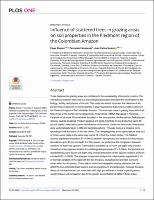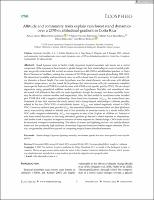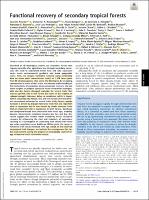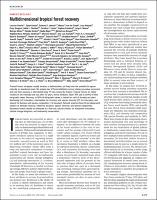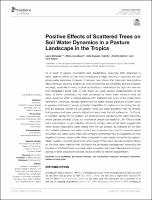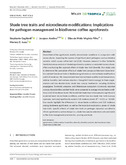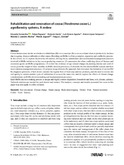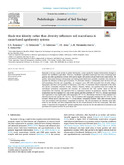Publicaciones en revistas científicas: Recent submissions
Voici les éléments 131-140 de 287
-
Influence of scattered trees in grazing areas on soil properties in the Piedmont region of the Colombian Amazon
(2022-01)Trees dispersed in grazing areas are contribute to the sustainability of livestock systems. The interactions between trees and soil are ecological processes that allow the modification of the biology, fertility, and physics ... -
Genetic diversity and population structure for ocelots (Leopardus pardalis) in Costa Rica
(Oxford University Press, 2021-12)Ocelots (Leopardus pardalis) are a wide-ranging felid species, occurring from southern United States to northern Argentina. They occupy various habitats and are usually considered the most abundant wild cat species in ... -
Altitude and community traits explain rain forest stand dynamics over a 2370-m altitudinal gradient in Costa Rica
(2021-12)Stand dynamic rates in Earth’s vitally important tropical mountain rain forests are a central component of the response of these forests to global change, but their relationships to environmental gradients are poorly ... -
Functional recovery of secondary tropical forests
(Editorial Board, 2021-11)One-third of all Neotropical forests are secondary forests that regrow naturally after agricultural use through secondary succession. We need to understand better how and why succession varies across environmental gradients ... -
Multidimensional tropical forest recovery
(AAAS, Washington, DC (USA), 2021-12)Tropical forests disappear rapidly because of deforestation, yet they have the potential to regrow naturally on abandoned lands. We analyze how 12 forest attributes recover during secondary succession and how their ... -
Positive Effects of Scattered Trees on Soil Water Dynamics in a Pasture Landscape in the Tropics
(2021)As a result of canopy interception and transpiration, trees are often assumed to have negative effects on the local hydrological budget resulting in reduced soil and groundwater resources. However, it has also been shown ... -
Shade tree traits and microclimate modifications: Implications for pathogen management in biodiverse coffee agroforests
(Wiley Biotropica, New Jersey (Estados Unidos), 2021-04)Diversified coffee agroforests modify microclimate conditions in comparison with monocultures, impacting the success of significant plant pathogens, such as Hemileia vastatrix, which causes coffee leaf rust (CLR). However, ... -
Rehabilitation and renovation of cocoa (Theobroma cacao L.) agroforestry systems. A review
(INRAE, París (France) ; Springer-Verlag France (Switzerland), 2021-10)Cocoa farmers must decide on whether to rehabilitate (Rh) or to renovate (Re) a cocoa orchard when its productivity declines due to ageing, disease outbreaks or other causes. Deciding on Rh/Re is often a complex, expensive ... -
Shade tree identity rather than diversity influences soil macrofauna in cacao-based agroforestry systems
(Elsevier, Ámsterdam (Netherlands), 2021-09)Humanity is facing a rapid decline in global biodiversity, caused mainly by tropical deforestation through industrial and smallholder agriculture. However, smallholder agriculture landscapes host areas containing home ... -
Transformation of coffee-growing landscapes across Latin America. A review
(CATIE, Turrialba (Costa Rica), 2021-09)In Latin America, the cultivation of Arabica coffee (Coffea arabica) plays a critical role in rural livelihoods, biodiversity conservation, and sustainable development. Over the last 20 years, coffee farms and landscapes ...


